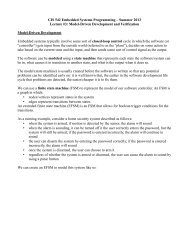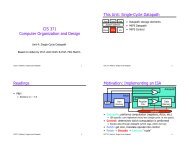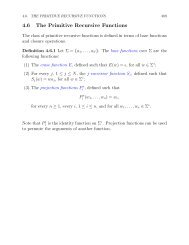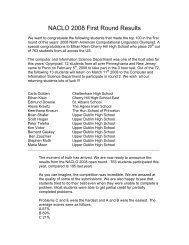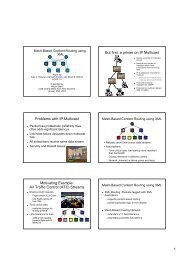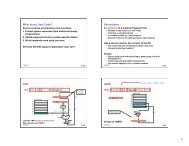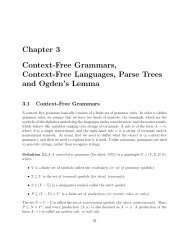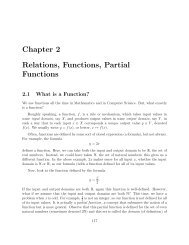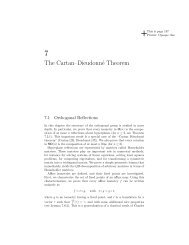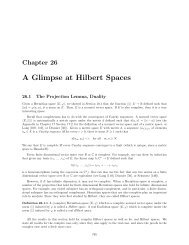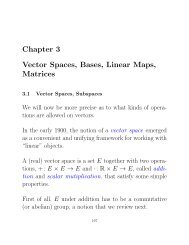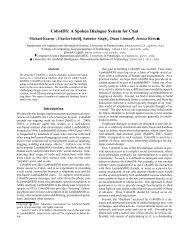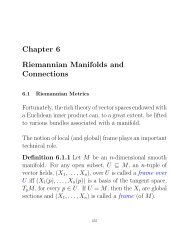Chapter 7 Assembly Language - Computer & Information Science
Chapter 7 Assembly Language - Computer & Information Science
Chapter 7 Assembly Language - Computer & Information Science
You also want an ePaper? Increase the reach of your titles
YUMPU automatically turns print PDFs into web optimized ePapers that Google loves.
Opcodes and Operands<br />
Opcodes<br />
• Reserved symbols that correspond to LC-3 instructions<br />
• Listed in Appendix A<br />
!ex: ADD, AND, LD, LDR, …<br />
Operands<br />
• Registers -- specified by R0, R1, …, R7<br />
• Numbers -- indicated by # (decimal) or x (hex) or b (binary)<br />
!Examples: “#10” is “xA” is “b1010”<br />
• Label -- symbolic name of memory location<br />
• Separated by comma<br />
• Number, order, and type correspond to instruction format<br />
!ex:<br />
ADD R1,R1,R3<br />
ADD R1,R1,#3<br />
LD R6,NUMBER<br />
BRz LOOP<br />
CSE 240<br />
Assembler Directives<br />
Pseudo-operations<br />
• Do not refer to operations executed by program<br />
• Used by assembler<br />
• Look like instruction, but “opcode” starts with dot<br />
Opcode<br />
.ORIG<br />
.END<br />
.FILL<br />
.BLKW<br />
.STRINGZ<br />
CSE 240<br />
Operand<br />
address<br />
value<br />
number<br />
n-character<br />
string<br />
Meaning<br />
starting address of program<br />
end of program<br />
allocate one word, initialize with<br />
value<br />
allocate multiple words of storage,<br />
value unspecified<br />
allocate n+1 locations,<br />
initialize w/characters and null<br />
terminator<br />
7-9<br />
7-11<br />
Labels and Comments<br />
Label<br />
• Placed at the beginning of the line<br />
• Assigns a symbolic name to the address corresponding to line<br />
!ex:<br />
LOOP: ADD R1,R1,#-1<br />
BRp LOOP<br />
Comment<br />
• Anything after a semicolon is a comment<br />
• Ignored by assembler<br />
• Used by humans to document/understand programs<br />
• Tips for useful comments:<br />
!Avoid restating the obvious, as “decrement R1”<br />
!Provide additional insight, as in “accumulate product in R6”<br />
!Use comments to separate pieces of program<br />
CSE 240<br />
Muti-Word Assembler Directives<br />
.BLKW #4 shorthand for:<br />
• .FILL x0<br />
• .FILL x0<br />
• .FILL x0<br />
• .FILL x0<br />
.STRINGZ “Hello” shorthand for:<br />
• .FILL x48 ; ‘H’<br />
• .FILL x65 ; ‘e’<br />
• .FILL x6C ; ‘l’<br />
• .FILL x6C ; ‘l’<br />
• .FILL x6F ; ‘o’<br />
• .FILL x0 ; NULL terminator<br />
CSE 240<br />
7-10<br />
7-12



